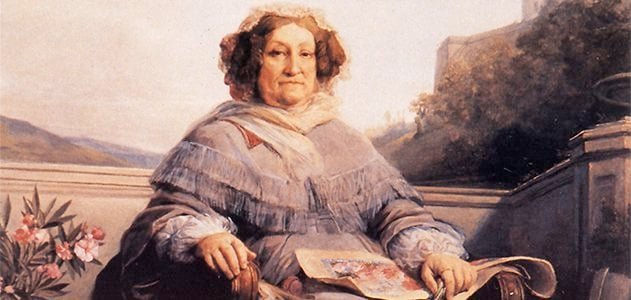On December 16, 1777, Barbe-Nicole Ponsardin, the mother of champagne was born. Ponsardin came from a wealthy family in Reims, France. Her father Ponce Jean Nicolas Philippe Ponsardin was a textile merchant and politician who worked with Philippe Clicquot. Clicquot was also an important textile merchant and they decided to strengthen their companies and families through the arranged marriage of their children.
At 21 years old Barbe-Nicole married François Clicquot uniting the family. Clicquot also owned some vineyards but hadn’t been too serious in the winemaking game yet but his son François saw it had great promise.
François began work right away in the champagne business with his father expanding the company to 60,000 bottles a year and shipping throughout Europe at the start of the 19th century. On March 20, 1799, their daughter Clémentine was born and six short years later her husband François would die of typhoid or suicide on October 23, 1805. Now with a small child and a champagne house Barbe-Nicole, Veuve Clicquot had to decide what to do next.
Her father-in-law Philippe wanted to sell the company but Barbe-Nicole wanted to take it over. At the time the new Napoleonic Code didn’t allow women to work or head a company unless they were widows. She had enough family money that she would be able to take on the business on her own, something that women did not do at the time. One of the first women to lead an International business, forever known as Veuve Clicquot was born in that moment. In 1810 she launched Veuve-Clicquot Ponsardin and became the first female champagne producer and the first to lead a champagne house.
A keen head for business with the help of lifelong employee Louis Bohne, she discovered that the Russian royalty loved her Champagne and shipped thousands of bottles to them. When Napoleon’s naval blockades thwarted her business, she used other boats to get her liquid gold to them. On the brink of losing everything she would charter a Dutch boat to sneak down the rivers to Russia with over 10,000 bottles. Selling out in just a few weeks she would do it again and again. This decision would change her business, surviving on the waterways of France and why you see the anchor on the bottle today. As for that distinct yellow color of the label, well that comes from a perfect French chicken egg yoke.
While many Champagne houses waited for the conflicts to be over she used the time to build her brand and when things eased up she was ready to take on the world. By 1814, she was producing 400,000 bottles a year.
One day when they were trying to figure out a better method to remove the lees (yeast) from the bottle. Sitting around her kitchen table she came up with an idea and began to cut holes into her table. She created the technique of riddling that allowed the bottles to be placed at a 45-degree angle so the yeast would gather in the neck of the bottle, frozen, and removed, thus ending in that clear glass of bubbles.
La Grande Dame de la Champagne would die on July 29, 1866, at 89 years old, leaving behind a legacy that would last until this day. At the time of her death, she was now producing 750,000 bottles a year. Today the house is owned by LVMH, the largest luxury brand in the world, and produces more than 4,000,000 bottles a year. I think Madame Clicquot would be pretty proud of how beloved her champagne is today.
On my first visit to France, a trip to the motherland was at the top of my list. As we drove into Reims it was straight to the golden gates of the Madame herself. A tour of the champagne house includes a visit down into the caves that have been used for hundreds of years. Along the rows and rows of riddling racks keep an eye out at the chalk walls. During World War I they were used as a hospital and red crosses remain to remind us of the past and are especially important today when we need to know how we can survive.
I’ll keep my Vueve-colored heels following in her steps every day with a glass of Champagne bien sur.





